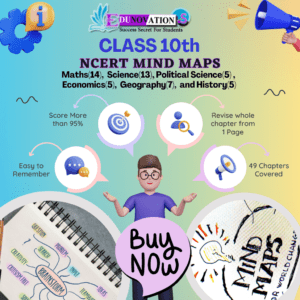Discover how the higher education student mental wellbeing task force survey is engaging stakeholders through ground consultations, multilingual portals, and expert guidance to improve student mental health.
Transformative Launch: Higher Education Student Mental Wellbeing Task Force Survey Mobilises Stakeholders Nationwide
Introduction
In a decisive move for student safety and mental health, the higher education student mental wellbeing task force survey officially launched its website on August 8, 2025. Chaired by Retired Supreme Court Justice Shri Ravindra Bhat and constituted by the Supreme Court of India, this initiative marks a watershed in addressing the rising crisis of student distress and suicides across higher educational institutions (HEIs) nationwide
Background & Urgency
India continues to face a public health emergency, with student suicides forming a significant share of the overall figures. According to NCRB data, 13,044 students tragically died by suicide in 2022 Recognizing the gravity, the Supreme Court, on March 24, 2025, mandated the constitution of a National Task Force to study and address mental health concerns in HEIs, incorporating diverse expertise in clinical psychology, social justice, community medicine, and gender studies
Task Force Scope & Composition
The Task Force adopts a holistic, inclusive approach:
- Covers all types of HEIs—central, state, private, professional, and technical institutions
- Includes experts from multidisciplinary fields: social sciences, disability rights, clinical psychology, community medicine, gender studies, and more
- Supported by critical voices in the Ministry: Dr Vineet Joshi (Higher Education Secretary), Rina Sonowal Kouli (Joint Secretary), Ministry officials, NIC, and media representatives
Toppers Use Mind Maps to score more than 95%
NCERT Class 11th Commerce Mind Maps
Add to cartOriginal price was: ₹999.00.₹199.00Current price is: ₹199.00.NCERT Class 12th Chemistry Mind Maps
Add to cartOriginal price was: ₹199.00.₹75.00Current price is: ₹75.00.NCERT Class 12th Commerce Mind Maps
Add to cartOriginal price was: ₹999.00.₹199.00Current price is: ₹199.00.NCERT Class 12th Science Mind Maps
Add to cartOriginal price was: ₹999.00.₹199.00Current price is: ₹199.00.NCERT Mind Maps For Class 10th
Add to cartOriginal price was: ₹999.00.₹199.00Current price is: ₹199.00.
Purchase Today
Website & Stakeholder Survey Portal Launch
The Task Force’s newly launched website serves as a central digital hub for participating in the higher education student mental wellbeing task force survey, encouraging inputs from:
- Students, parents, faculty, institutional heads
- Mental health professionals and service providers
- General public: alumni, NGOs, media, concerned citizens
The portal deploys structured, anonymous surveys in both English and Hindi, covering themes such as:
- Campus environment
- Inclusivity and belongingness
- Sources of distress and systemic discrimination
- Existing grievance redressal and support systems
- Suggestions to enhance student wellbeing
In parallel, an institutional survey allows HEI heads to submit data on suicides, preventive mechanisms, and support infrastructure
Ground Consultations & Institutional Visits
Beyond the digital portal, the Task Force is conducting on-ground consultations to ensure authenticity and context in findings:
- Visiting diverse institutions—across regions and institutional types—with a focus on marginalised students and historically high-suicide areas
- Engaging in open forums with students, faculty, administrators, and grievance committees
- Consulting experts, NGOs, mental health professionals, and reviewing research and suicide data
Multi-pronged Strategy and Expert Support
Justice Bhat emphasized a multi-pronged methodology combining:
- Digital surveys across stakeholder categories
- Field visits to varied institutions, including smaller towns
- Consultations with experts and researchers in suicide prevention
Dr Vineet Joshi remarked that India’s vast higher education landscape—over 60,000 institutions and 4.46 crore students—requires a collaborative, evidence-based response
Contextual Depth & National Strategy
India’s 2017 Mental Healthcare Act decriminalised attempted suicide and laid groundwork for mental health reforms Moreover, India’s National Suicide Prevention Strategy (2022) highlights multisectoral approaches championed by WHO The current task force builds on these precedents—targeting student crisis through data-driven, inclusive initiatives.
Linking to Knowledge Resources
- For students preparing for exams and wanting structured guidance, explore NCERT Courses, Current Affairs, Notes, MCQs, Videos, Syllabus, Free NCERT PDFs, and NCERT Mind Maps available on our platform via internal links:
- Courses: For NCERT Courses
- Current Affairs: For Current Affairs
- Notes: For Notes
- MCQs: For MCQ’s
- Videos: For Videos
- Syllabus: For Syllabus
- NCERT PDFs: For Downloads of Free NCERT PDFs
- Mind Maps: For NCERT Mind Maps
- For contacting schools or educational institutions, refer to the authoritative platform: Mart Ind Infotech (external link).
Enhanced Context & Expert Insight
- Dr Aqsa Shaikh, Task Force member, stressed the national scale: “The number of students who attempt suicide… is manifold and a matter of national concern. This will cater to over four crore students… a consolidated plan”—reflects the ambitious outreach
- Data underscores the urgency: 13,044 student deaths in 2022, with suicides contributing about 7.6% of total deaths. Maharashtra, Madhya Pradesh, Tamil Nadu are hotspots
Roadmap & Expected Timeline
- The Task Force’s interim report is due by end of September 2025, with the final report slated before year-end
- Methodology includes triangulating survey data, on-ground visits, and consultations with prevention professionals and stakeholders.
Clear, SEO-Friendly Structure
Sections Overview
- Background & Motivation
- Task Force Structure & Scope
- Survey Portal Launch
- Field Engagements
- Strategy & Methodology
- Context: Legal & National Frameworks
- Expert Commentary
- Timeline & Future Steps
- Additional Resources & Links
Readability Aids
- Bulleted lists for themes and institutions
- Subheadings for each section
- Concise, journalistic paragraphs
10 FAQs: Addressing Key Queries (Long-Tail Keyword Focus)
- What is the higher education student mental wellbeing task force survey?
It’s an online, anonymous stakeholder survey platform launched by the National Task Force to collect insights on student mental wellbeing, campus environment, and support systems. - Who can participate in the higher education student mental wellbeing task force survey?
Students, parents, faculty, institution heads, mental health professionals, and members of the public including alumni and NGOs. - Why is the higher education student mental wellbeing task force survey important?
It enables comprehensive, evidence-backed recommendations to prevent suicides and improve mental health in HEIs. - How does the higher education student mental wellbeing task force survey ensure privacy?
It uses structured, confidential questionnaires in English and Hindi, with no personal identifiers collected. - Does the higher education student mental wellbeing task force survey include institutional data?
Yes. HEIs can submit data on reported suicides, preventive measures, and support infrastructure through a specialized institutional survey. - What additional efforts accompany the survey beyond data collection?
The Task Force undertakes on-ground consultations, regional visits, and stakeholder forums to gather qualitative insights. - What fields of expertise are represented in the Task Force conducting the higher education student mental wellbeing task force survey?
The panel includes experts in clinical psychology, community medicine, social justice, disability rights, women’s studies, and more. - What is the timeline for the higher education student mental wellbeing task force survey initiative?
Data collection is ongoing. An interim report is due by end-September 2025, followed by a final report before the year’s end. - How does the higher education student mental wellbeing task force survey link to national mental health frameworks?
It builds on the Mental Healthcare Act 2017 and India’s National Suicide Prevention Strategy, emphasizing decriminalization and multisectoral interventions. - How can students benefit from the higher education student mental wellbeing task force survey findings?
Improved campus support systems, counseling access, grievance mechanisms, and policies to foster inclusivity, safety, and psychological resilience.














